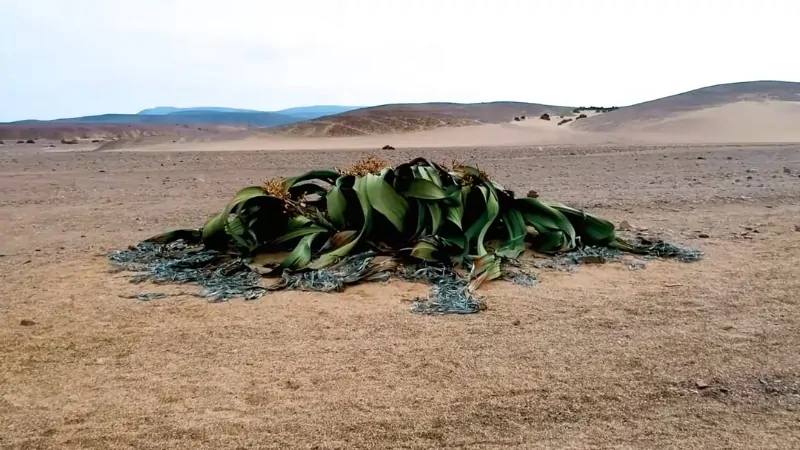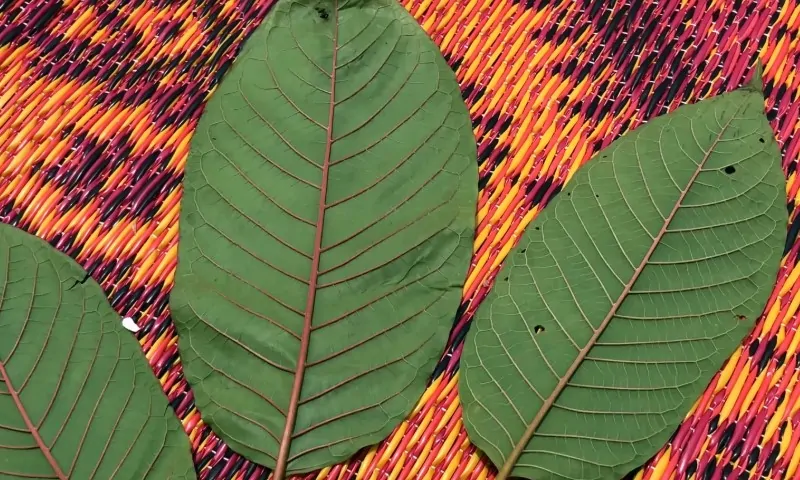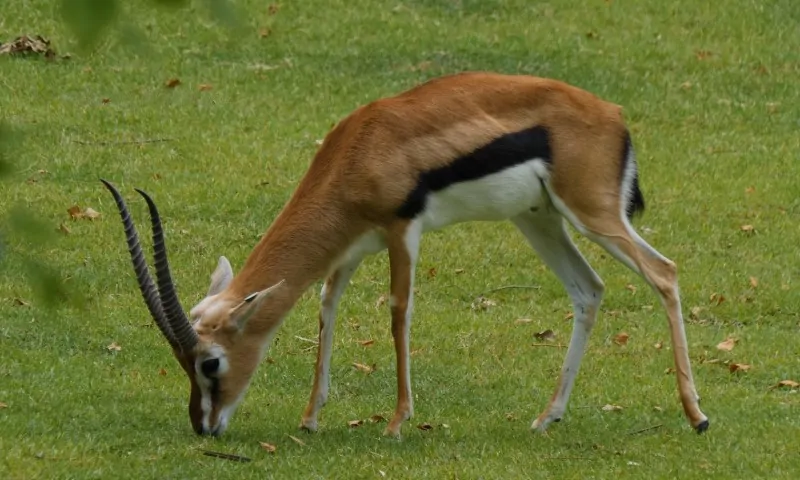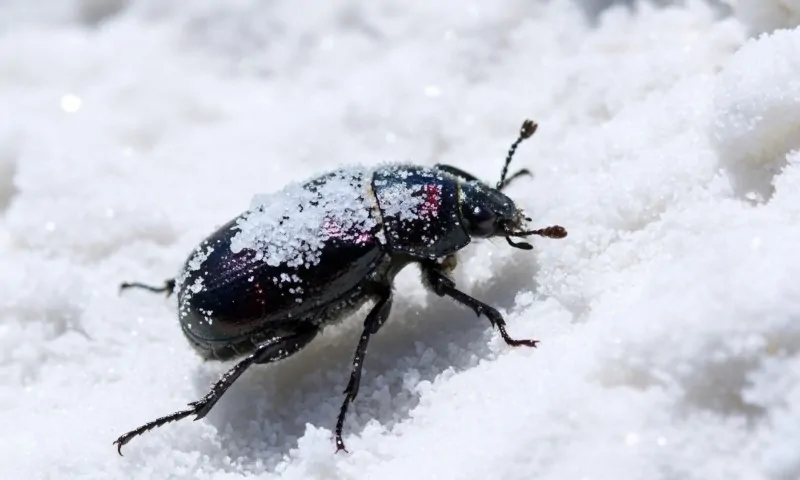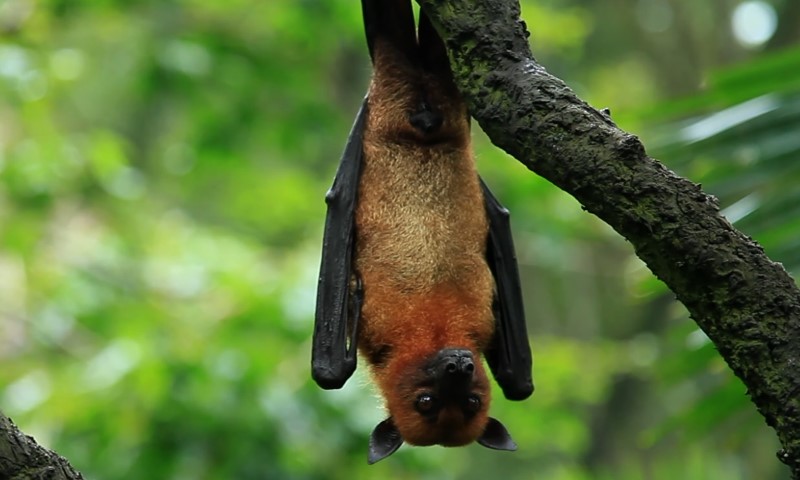Imagine a plant that lives for millennia, endures the harshest desert conditions imaginable, and consists of only two leaves that continuously grow throughout its entire life. This isn’t a sci-fi fantasy; it’s the reality of the Welwitschia, a botanical marvel that has captivated scientists and enthusiasts alike for centuries.
What makes Welwitschia one of the world’s most unusual plants? From its bizarre appearance to its extraordinary longevity and unique adaptations, this article will delve into the fascinating world of Welwitschia mirabilis, exploring the characteristics that set it apart from virtually every other plant on Earth.
Prepare to learn about a true survivor, a living fossil that defies conventional botanical norms and offers a profound testament to life’s incredible resilience.
Table of Contents
ToggleDiscovering a Botanical Anomaly
The scientific world first became aware of the Welwitschia in 1859, when Austrian botanist Friedrich Welwitsch stumbled upon it during an expedition in what is now Angola. His initial reaction, reportedly, was one of profound astonishment, a mix of awe and disbelief at the sight of something so utterly alien.
He described it as “tree-like, but certainly not a tree,” an apt description for a plant that defies easy categorization. The species was later named Welwitschia mirabilis in his honor, “mirabilis” meaning “marvelous” or “wonderful” in Latin—a fitting tribute to its truly unique nature.
This initial discovery sparked intense scientific curiosity, and the Welwitschia quickly became a subject of fascination, cementing its status as one of the world’s most unusual plants. Its bizarre appearance and seemingly impossible existence in such an extreme environment immediately marked it as a botanical enigma.
A Family of Its Own: Understanding Welwitschia’s Classification
The Welwitschia’s distinctiveness extends to its taxonomic classification. It’s not just a strange plant; it occupies its unique corner of the botanical world. Welwitschia mirabilis is the sole species in the genus Welwitschia, which in turn is the sole genus in the family Welwitschiaceae.
This family itself belongs to the order Gnetales, a small group of gymnosperms that also includes Gnetum and Ephedra. While gymnosperms are an ancient group of seed plants that include conifers, cycads, and ginkgo, the Gnetales stand out for possessing some characteristics typically associated with flowering plants (angiosperms), such as vessel elements in their wood.
However, the Welwitschia’s morphology and life cycle are so specialized that it truly stands alone. This isolated taxonomic position further emphasizes why it’s considered one of the most unique plant characteristics on the planet, making it a truly bizarre plant.
The Two-Leaf Wonder: A Lifetime of Uninterrupted Growth
One of the most astonishing features of the Welwitschia is its leaf structure. Unlike most plants that produce new leaves periodically, the Welwitschia develops only two leaves throughout its entire lifespan.
These two embryonic leaves, formed shortly after germination, continue to grow from their base for hundreds of years, even thousands. Over time, the tips of these leaves fray and split due to the harsh desert winds, creating the illusion of many leaves.
However, genetically, they remain just two. This continuous basal growth is a remarkable adaptation, allowing the plant to maximize its photosynthetic surface area despite the relentless abrasion from sand and wind.
This bizarre plant’s commitment to just two leaves, which grow continuously, is a prime example of its unusual plant biology and a significant factor in why it’s one of the world’s most extraordinary plants.
Characteristic
Description
Number of Leaves
Two (cotyledons that persist and grow)
Growth Pattern
Continuous basal growth from a meristematic region
Appearance
Leathery, strap-like, often tattered and split at the ends
Color
Greenish-brown, sometimes reddish due to stress
Function
Photosynthesis, water absorption (through specialized stomata)
Longevity Beyond Belief: A Plant That Defies Time
The lifespan of a Welwitschia is almost incomprehensible. While precise dating is challenging, carbon dating has revealed that many individuals lived for over 1,500 years, and some are estimated to be over 2,000 years old. This makes them some of the longest-living organisms on Earth.
Imagine a single plant that has witnessed centuries of human history, from the rise and fall of empires to technological revolutions, all while quietly enduring in the stark Namib Desert. This extraordinary longevity is attributed to its slow growth rate, efficient water usage, and remarkably robust genetic makeup.
Such an extended lifespan significantly contributes to its reputation as a unique plant, a testament to its distinctive characteristics and its ability to thrive in an environment that would kill most other flora. This incredible endurance is a significant reason why Welwitschia mirabilis truly stands out among unusual plants.
Adapting to Extremes: Survival in the Namib Desert
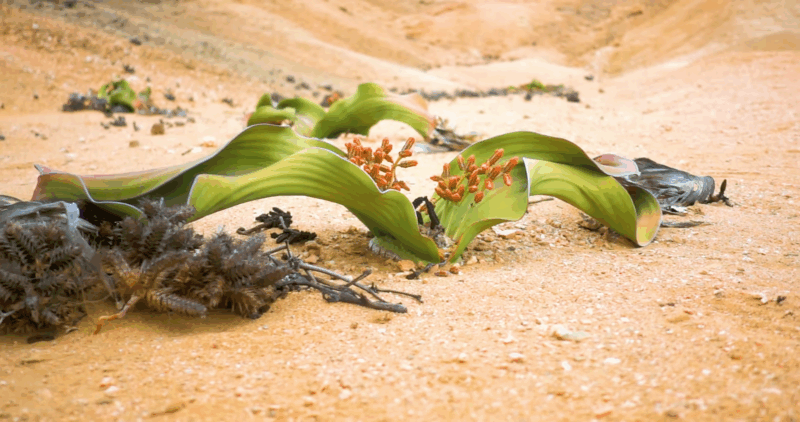
The Namib Desert, where Welwitschia predominantly grows, is one of the world’s oldest and driest deserts. Rainfall is scarce and unpredictable, often averaging less than 100 mm per year. Daytime temperatures can soar, while nights can be surprisingly cool.
Yet, the Welwitschia not only survives but thrives in these brutal conditions. Its survival is a masterclass in adaptation, showcasing a suite of unique plant characteristics that allow it to exploit every available resource. This resilience in such an arid environment makes it a truly bizarre plant and highlights its unusual plant characteristics.
Fog Harvesting: A Lifeline in the Desert
One of Welwitschia’s most crucial adaptations is its ability to absorb moisture directly from fog. The Namib Desert experiences frequent coastal fogs, which roll in from the Atlantic Ocean. The Welwitschia’s broad, strap-like leaves, often covered in dewdrops, act as a natural fog-catching mechanism.
Specialized stomata (pores) on the leaf surface open at night to absorb this condensed moisture, bypassing the need for extensive root systems to seek out groundwater. This unique water acquisition strategy is vital for its survival in such an arid landscape, making it a weird plant in its approach to hydration.
Root System: A Taproot for Stability

While fog harvesting is critical for water, the Welwitschia also possesses a formidable taproot system. This long, woody taproot can extend several meters deep into the sandy soil, anchoring the plant securely and potentially reaching subterranean water sources.
However, its primary source of water uptake is believed to be fog. This dual approach to water acquisition underscores the remarkable adaptability of this plant and explains how it can persist in such a challenging environment.
Metabolism and Photosynthesis: Efficiency is Key
The Welwitschia exhibits crassulacean acid metabolism (CAM) photosynthesis, a pathway commonly found in desert succulents. Unlike most plants that open their stomata during the day to take in carbon dioxide, CAM plants open their stomata at night, minimizing water loss through transpiration during the scorching daytime hours.
They store carbon dioxide as malic acid and then process it during the day when sunlight is available for photosynthesis. This metabolic efficiency is paramount for survival in the water-stressed Namib Desert. This intricate metabolic adaptation contributes to its status as a unique and remarkable plant.
Reproduction: A Peculiar Conifer
Despite its angiosperm-like features, Welwitschia is a gymnosperm, meaning it produces “naked” seeds, not enclosed within an ovary. Its reproductive structures are cone-like, with male and female cones on separate plants (dioecious). The female cones, resembling small pineapples, develop winged seeds, aiding in wind dispersal.
Pollination is primarily wind-driven, but recent research also suggests the involvement of insects, particularly wasps, which are attracted to nectar produced by the male cones. This blend of primitive and seemingly more advanced reproductive strategies adds another layer to its unique plant characteristics, solidifying its position as one of the world’s most unusual plants.
The Cultural and Scientific Significance of Welwitschia
@seanwilliamsalim Welwitschia mirabilis | A Marvel of the Botanical World Full episode link: https://youtu.be/HlCwOYB8t7U As one of the longest-living plants in the world, the Welwitschia mirabilis can live over 2,000 years old in the wild. They are native to the harsh, arid conditions of the Namib desert, and has remained relatively unchanged ALL THE WAY from the Cretaceous period – thats over 100 million years ago! To give you some perspective, the T-rex, triceratops, and velociraptors existed at the same time as this plant. The Welwitschia – typically has only two leaves that grow continuously from its base throughout its lifespan. While the new leaf material grow outward from a thick, woody, short trunk, these leaves fray and split over time, giving the plant a ragged, tattered appearance. Looking at the dead center of this plant, most of us would mistakenly assume – that all Welwitschias are female. But they are dioecious, meaning male and female cones appear on separate plants. Male cones produce pollen, while female cones produce seeds. All of the welwitschias shown here were grown from seeds decades ago, in an undisclosed nursery location in Thailand. Learn more from the full episode – link is in the description. #onlyplants #Welwitschia #Welwitschiamirabilis #desertplants #desertplant #cacti #succulent ♬ original sound – Seanwilliamsalim
The Welwitschia’s unique existence has not only fascinated botanists but has also garnered significant cultural importance in its native range. It is a national symbol of Namibia and a source of pride for its resilience and unique beauty.
Scientifically, Welwitschia remains a subject of intense research. Its incredible longevity, unique growth habit, and extreme adaptations offer invaluable insights into plant evolution, survival mechanisms, and potential applications for understanding drought tolerance in other plant species.
Studying this bizarre plant can unlock secrets that could benefit agriculture and conservation efforts in a changing climate. Its status as a living fossil provides a direct link to ancient flora, offering a glimpse into the distant past and reinforcing its role as a strange plant.
Threats and Conservation: Protecting a Living Fossil
Despite its incredible resilience, the Welwitschia faces threats. Habitat degradation from mining activities, off-road driving, and overgrazing by livestock can damage plants and disrupt their fragile ecosystems.
Illegal collection for horticultural purposes also poses a risk, though this is less common due to the plant’s challenging cultivation requirements. Conservation efforts are crucial to protect this remarkable species.
These efforts include establishing protected areas, regulating human activities in Welwitschia habitats, and raising public awareness about the ecological importance of Welwitschia.
As a unique plant characteristic of the Namib Desert, safeguarding the Welwitschia is essential for maintaining biodiversity and preserving a truly bizarre plant.
FAQ
Conclusion
Introducing the weird and wonderful welwitschia plant! This plant can live for up to 1,000 years.
Join us over on Instagram for more incredible images ➡️ https://t.co/OxT0bz9gjN pic.twitter.com/sjDefphuLZ
— Wildlife Photographer of the Year (@NHM_WPY) November 15, 2024
The Welwitschia stands as a monumental testament to the sheer adaptability and resilience of life on Earth. Its bizarre appearance, incredible longevity, and highly specialized adaptations to one of the planet’s harshest environments make it undeniably one of the world’s most unusual plants.
From its two continuously growing leaves to its reliance on fog for hydration, every aspect of Welwitschia mirabilis defies conventional botanical wisdom. It is a living fossil, a relic from a distant past that continues to thrive against all odds, offering invaluable lessons in survival and evolution.
As we continue to unravel its mysteries, the Welwitschia remains a powerful symbol of nature’s endless capacity for wonder and an enduring reminder of the strange, beautiful, and utterly unique characteristics that make this plant so remarkable.
Protecting this exceptional plant is not just about preserving a species; it’s about safeguarding a living piece of Earth’s ancient history and an unparalleled example of botanical ingenuity.
Related Posts:
- Top 12 Most Strange Desert Plants - Flora You Won't…
- What Makes the Fennec Fox So Perfectly Adapted for…
- Top 10 Most Dangerous Desert Animals You Should Avoid
- How Far Can a Horse Walk in One Day Across Varied Terrains
- How Fast Can a Camel Run? Which One is Faster?
- The Spider-Tailed Horned Viper - One of Nature’s…

